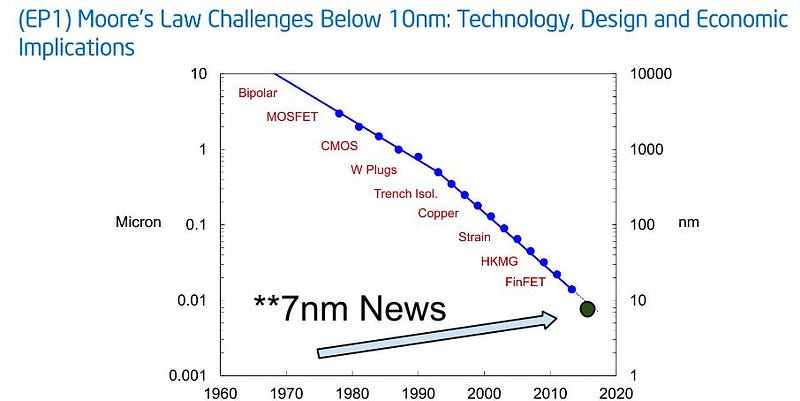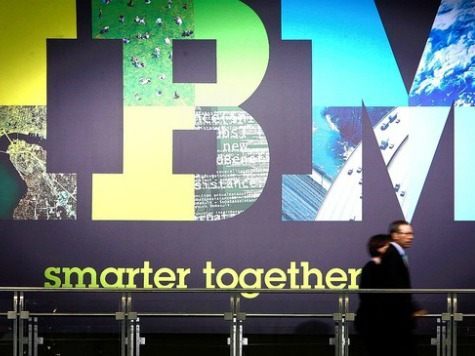
Credit: Intel, edited
(Ferenstein Wire) – IBM announced a major breakthrough in chip technology, with a super-tiny seven-nanometer chip. This chip breaks the difficult 10nm barrier and proves that the industry can still move along an important innovation pace known as “Moore’s Law.”
Practically speaking, the Intel team used a novel type of hybrid fabric, silicon germanium, to shrink the fundamental components of the chip to 7nm each. This allows cheaper and more powerful computing in the near future. For IBM, it shows that a $3B investment in advancing computer power, to keep up with the demand of big data, can pay off for the company.
More broadly speaking, it renews optimism that technology can maintain a breakneck pace of Moore’s Law, which predicts that the density of transistors will double every six months. Or, more generally, technology grows exponentially. With the 7nm breakthrough, technology has roughly continued on the exponential growth path.
It is worth noting that Moore’s Law is not really a mathematical law, but a rough observation about how technology improves over time. The pace of technology speeds up, moving much quicker than Moore has anticipated. But, the good news is that technological progress is not slowing down, and previous physical barriers can be overcome.
For more stories like this, subscribe to the Ferenstein Wire newsletter here.

COMMENTS
Please let us know if you're having issues with commenting.